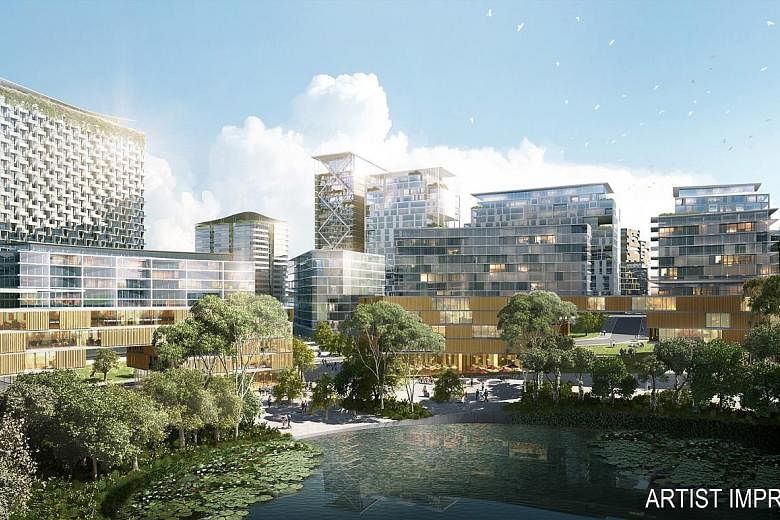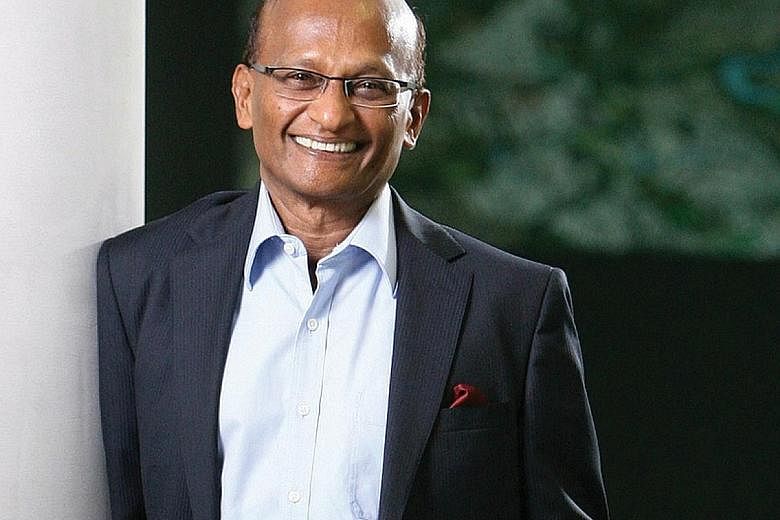More than 25 years ago, Mr Maha Sinnathamby, a Malaysian immigrant in Australia, stood on top of a hill and looked out across a large piece of land that was being sold on the outskirts of Brisbane.
Spanning 2,860ha, the land was covered with rocks and forest and was proving difficult to sell.
But Mr Sinnathamby was instantly convinced: Looking across the terrain, he had a vision that this stretch of empty bushland in southern Queensland could be transformed into a new city.
More than two decades later, the land - bought with a business partner for A$8 million (S$8.3 million) - is quickly being turned into Australia's first private city.
Known as Greater Springfield, the site, about 30km south-west from Brisbane's city centre, is already home to 32,000 people and could eventually have a population of 200,000. With more than A$12 billion already invested, the area has a university campus, 10 schools, 15 childcare centres, two train stations, a large shopping centre, a hospital and a golf course.
Recalling his decision to buy the land in 1992, Mr Sinnathamby admits to The Straits Times: "Even my wife thought I was crazy.
"I said to myself, where else would you find such a big land mass just outside a capital city? So I began the journey from an unwanted piece of real estate to building a new city."
Now worth an estimated A$943 million, Mr Sinnathamby is about to embark on the next plan for the development. He wants to create a Silicon Valley-style precinct, which will link up to health and education zones. The area, called Idea City, will span about 42ha.
Mr Sinnathamby believes the precinct could create more than 19,000 jobs and attract global technology giants such as Google, Facebook and Microsoft.
"Silicon Valley happened haphazardly. If you planned it, you can make it work and connect it to our schools and universities and health community," he says.
Mr Sinnathamby, who would only say that his age is "in the 70s" (he is believed to be 77), has been described as a visionary and a dreamer.
The father of four has come a long way since his childhood in the Malaysian town of Rantau. He studied civil engineering at the University of New South Wales in Sydney before returning to work in Malaysia, where he married his wife Yoga.
The family migrated to Australia and he began developing property in Perth, where he had success but later lost everything in a failed attempt to publicly list his company.
"I came to Brisbane and I had no money, no friends. I said I am going to turn this city around," he said.
Mr Sinnathamby, whose children work for his company, Springfield Land Corporation, says his vision was to build a completely planned, sustainable city, including a mix of education and employment opportunities. He says his previous experience in property development had shown him the downside of piecemeal projects, which can lead to suburban sprawls with "huge social problems".
"Everyone wants to make a quick buck," he says. "They turn these developments into a dormitory suburb. To create employment is the core."
The plan for Greater Springfield is to have 86,000 residents by 2030, including the latest residential district - a 10,000-apartment area across 60ha called City Centre North.
Greater Springfield provides 19,000 jobs, including people employed at schools and in the retail and health sectors. The city has a campus of the University of Southern Queensland and, according to Mr Sinnathamby, is in discussion with two Chinese universities about setting up campuses.
Some experts have noted that the fast-growing development is risky and could turn sour if employment opportunities fall through or if transport links do not keep up with the expansion.
"If anything is going to turn this into a disadvantaged place, it will not be the density but the prospect of a long, slow commute to work," Western Sydney University urban studies expert Michael Darcy told Fairfax Media in March.
But the development has largely been welcomed by the local and state authorities. It continues to attract newcomers while keeping unemployment at about 3.4 per cent, well below the state average of 5.9 per cent.
"Springfield is contributing to the community and the economic growth of our community like you wouldn't believe," Ipswich's mayor, Mr Paul Pisasale, told Queensland's Sunday Mail in October. "Maha could have just sold his blocks of land and moved on, but what he did is create a community."
Mr Sinnathamby says such projects require a long-term commitment which is often beyond governments and large companies.
"To create a city like this, you need relentless passion," he says.


